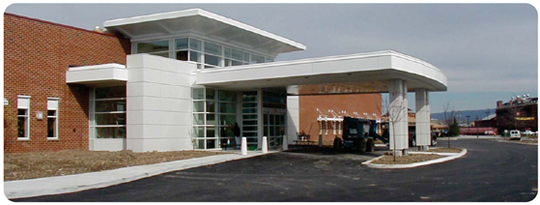Category: Real Estate Development
Unlock the Value of Your Medical Fitness Center
Written on December 16, 2013 at 10:17 am, by John P. Greene
With hospitals increasingly focused on core businesses, there is a growing trend to sell and lease back a variety of non-core real estate, including medical office buildings, surgery centers and senior housing. Which raises the question, should your hospital capitalize on the real estate value of your medical fitness center? If it is an underperforming asset, the organization may consider selling it and developing a strategy to achieve the financial results required for future disposition.
During the last two decades, more than 700 community hospitals in the United States have developed medically integrated fitness centers or wellness centers. These hospitals have invested more than $3 billion in real estate. While many centers have produced sizeable long-term economic benefits, most have drained financial resources. Often rationalized as a community asset or a marketing channel for the hospital, many of these retail service businesses simply have lost their energy and failed to produce long-term economic benefits.
Within the last 15 years, the healthcare real estate market has exploded. Both public and private real estate investment trusts (REITs) as well as private investors have acquired all types of healthcare real estate, including such special-purpose facilities as free-standing emergency rooms. The movement away from the fortress mentality of owning everything has been steady as executives have sought to capture values in these locked-up assets.
To benefit from this trend, owners must significantly improve financial performance to achieve a net operating income comparable with other medical real estate holdings. For medical fitness centers, we project an outside investor will value a facility at a 9 to 10 percent market capitalization rate of net operating income. This rate is greater than the target for a medical office building (7 to 8 percent) due to the special-purpose nature of the medical fitness center facility. Depending on your organization’s credit, both targets may be reduced under a sale/leaseback transaction.
If your center is not earning at least an 8 to 10 percent return on total project costs, it will take strategic planning, execution and communication as well as time to significantly improve financial performance. To achieve the positive consecutive returns that will allow an outside investor to value a potential acquisition can easily take at least three years.
For those organizations with viable medical fitness centers interested in capitalizing on their real estate values, the timing couldn’t be better. With real estate capital inflows at record levels and portfolios shifting to proven income-producing acquisitions, investors are becoming more interested in medical fitness centers. As with other real estate transactions, proper due diligence documentation and esthetic property improvements should be completed prior to solicitation.
As management consultants, MedFit Partners brings the focus to achieve financial results: we adhere to proven procedures and training programs to improve and empower staff performance, and we plan and execute strategic initiatives through powerful communications. MedFit Partners helps you find the answers needed to achieve your goals. We offer property evaluation services as well as placement of your transaction.
Category: Real Estate Development
Tags: Healthcare Real Estate
Ten Good Reasons Why Your Community needs a MedFit Wellness Center
Written on November 3, 2010 at 1:22 pm, by John P. Greene
1. Provide a channel to an enormous market of health-seeking Baby Boomers.
• By 2005, 1 out of 2 American adults will be over the age of 55.
• Four out of 10 in that group are willing to pay out-of-pocket to maintain their health and physical vibrancy.
2. Expand the visibility, scope and outreach of outpatient programs and affiliated physicians.
• Medical fitness center members represent a huge market of potential users of additional health-related services.
• Locating outpatient programs and physicians on-site provides natural and easy access to these services as required.
3. Provide a new source of operating income.
• Well-managed medical fitness centers consistently generate 15% or more of new net operating income for the general operating fund of the hospital.
• Typically, the money is used to further expand preventive initiatives in the community.
4. Utilize philanthropic donations to create a unique community asset.
• Although a medical fitness center consists of bricks and mortar, it is energetically human in scope and services.
• It offers a satisfying philanthropic opportunity to people interested in vigorous initiatives in community health.
5. Provide a mechanism to enter the integrative medicine marketplace.
• A medical fitness center provides an extension of the wellness continuum and can reflect or extend your institution’s philosophy.
• The center offers a natural, comfortable environment for introducing the professional services of integrative medicine practitioners and also can easily encompass licensed MD medical techniques.
6. Provide a more compassionate reality to your wellness mission.
• Typically, hospitals focus on wellness programming to improve community health, but frequently lack a centralized facility in which to provide these services.
• A fitness center offers a bright, inviting, health-focused environment in which to pursue wellness-related activities.
7. Financially underwrite satellite ambulatory care campus real estate.
• Virtually all healthcare providers struggle with how to operate effective outreach programs to expand and solidify their base.
• Fitness centers produce income to support the development of other synergistic real estate projects, such as senior housing and physician offices.
8. Definitively differentiate your organization from the competition.
• Only 500-600 local hospitals and healthcare systems across the country offer the advantage of medical fitness centers.
• Developing and building a center speaks volumes about your commitment to improving community health.
9. Expand social entrepreneurship role into other community health ventures.
• A successful fitness center project strengthens and enhances entrepreneurial interest and skills at the sponsoring institution.
• An enthusiastic entrepreneurial attitude plays an extremely valuable role in terms of future business growth, even in healthcare.
10. Create healthier patients for the future.
• Medical fitness centers help keep people healthier as they age.
• When these people eventually utilize healthcare services, they generally will require shorter hospital stays and have better outcomes, improving hospital cost-effectiveness.
Category: Consulting ~ News ~ Real Estate Development ~ Trends
Tags:
Re-developing Vacant Big Box Retail Facilities
Written on April 23, 2010 at 3:44 pm, by Robin Schuette

Your community has a unique hidden asset, which needs immediate attention. That unique resource is that closed, bland-looking big box retailer or possibly strip center, sitting in front of acres of parking on the main highway of town. Conveniently located to access its 10-mile market area and an instantly recognized location by consumers; these hidden resources are being redeveloped into a range of healthcare uses from medical malls to wellness centers. After redevelopment, they often spur new growth nearby.
What also is of interest is the ability to create a new ambulatory care setting at a lower cost than for a comparable new “Greenfield†type project. In most situations, both acquisition and renovation costs are substantially less, and financing is typically available from the owner or through other economic development programs especially for a new community amenity that our business model provides.
We worked with Altoona Hospital in Altoona, Pa., on the feasibility for this type of project. The Station Mall is an excellent example of the redevelopment of a 1970s shopping center into a new business of medical offices and potentially, a health and wellness center.
Today’s healthcare executives need to simultaneously expand and execute less costly approaches in a consumer-driven healthcare environment with convenient locations and a mix of physician, clinical and wellness services. If your organization has the vision to perceive of these resources as an opportunity, then we can create a program and a facility that works for you.
Category: Real Estate Development
Tags: Architecture ~ Business Planning ~ Careers ~ Community Outreach ~ Feasibility ~ Management ~ News ~ Real Estate Development ~ Wellness


